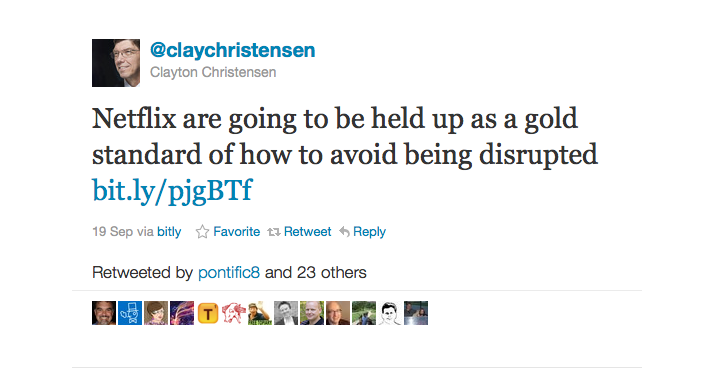Here’s the deal. Companies are around to profit maximize – a corporate form of self-interest. For many years, this was the organizing principle of all commercial enterprises. The rules, and …
Competing With Adobe, Apple
When a company like Apple launches a sexy new product (iPad), one can react (Amazon) or get caught flat-footed (Adobe). It’s easy to look at today’s market situation and say …
Growth In A Down Economy
Can your business grow in a down economy? According to a VARBusiness survey of 117 solution providers (“7 Ways to Grow in a Down Economy, VARBusiness, February 2009), fully half are expecting to grow in 2009. Does this seems crazy? It didn’t seem so to me until after I read the list of top strategies that the VARs had for achieving this growth. Any business that helps customers do more with less should do very well; something to which the booming SaaS / on-demand software market can attest. But, unless you are in a hot growth market, the same-old, same-old will not produce results in 2009. And, if you are in a hot-growth market like enterprise SaaS solutions, doing the right things during a down market will act like a competitive force multiplier.
Pricing as a Head Trip
Can prices be set too low for consumers? A recent study by Dr. Antonio Rangel of CalTech says yes. Dr. Rangel observed the brain activity of subjects and found they exhibited more pleasure drinking wines when they thought they cost more. For those of us that study the finer points of pricing, this is a very interesting result. We all know that there is a sense to “you get what you pay for” that acts as a negative factor when evaluating the lowest priced alternatives. What Dr. Rangel has established is that there is more than the fear of getting stuck with an inferior product at work; people actually get more enjoyment from certain products if they think they cost more. The data communicated by the price is working not just at a rational level, but at an emotional level as well. That is, from the brain’s standpoint, these products are objectively better in a post-purchase environment.
Standing Apart: How a Blender Creates Affinity
The central goal of online marketing isn’t awareness, it’s engagement. And the five key tools to produce engagement are affinity, personality, community, co-creation, and advocacy. Engagement at the broadest level is getting the customer involved with your company, with your products and often, with your people. You want your customers to get to know your organization, its values and services. When customers like what they see and experience, the relationship deepens and it leads to affinity. Thus what was once a distant relationship becomes personal. Another way to same thing perhaps is to say that “Personality replaces traditional brand marketing”
Online Marketing as Personality Marketing
Online branding used to be about static, brochure-like, well executed but rigorously pre-defined websites. But great brands, like most people, are more than a flat dimension. People want to know …
Google SMB Push…
Having launched what now seems like a bazzillion products, I think I can draw a conclusion about the simplicity of enterprise product adoption. Here goes. There are only 3 things …
The Holy Grail of the SMB Market
I’ve been working with many a new client who wants to reach the SMB market. These are traditional enterprise companies who want to expand. And they the SMB market as …
Power of the Influencer — Who is Yours?
When you want to buy a new bbq, who do you ask? If you want to know which smartphone to buy, what blog do you go to? And if you’re …
- Culture & Leadership (146)
- Entrepreneurship (160)
- Featured (8)
- Market Power (216)
- onlyness (124)
- Social (80)
- Talks (29)
- Technology & Trends (78)
- The Personal Story (81)
- Uncategorized (195)








